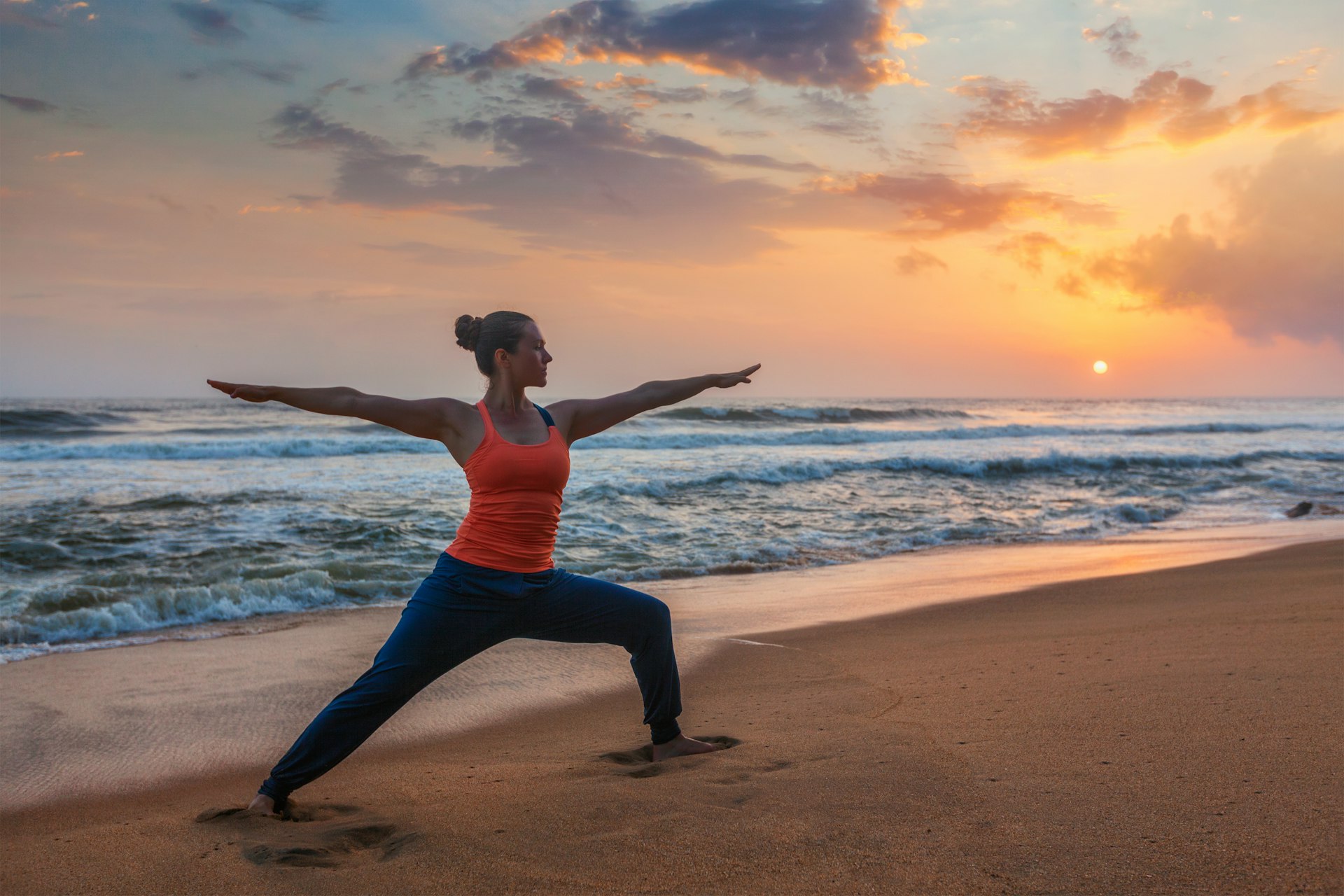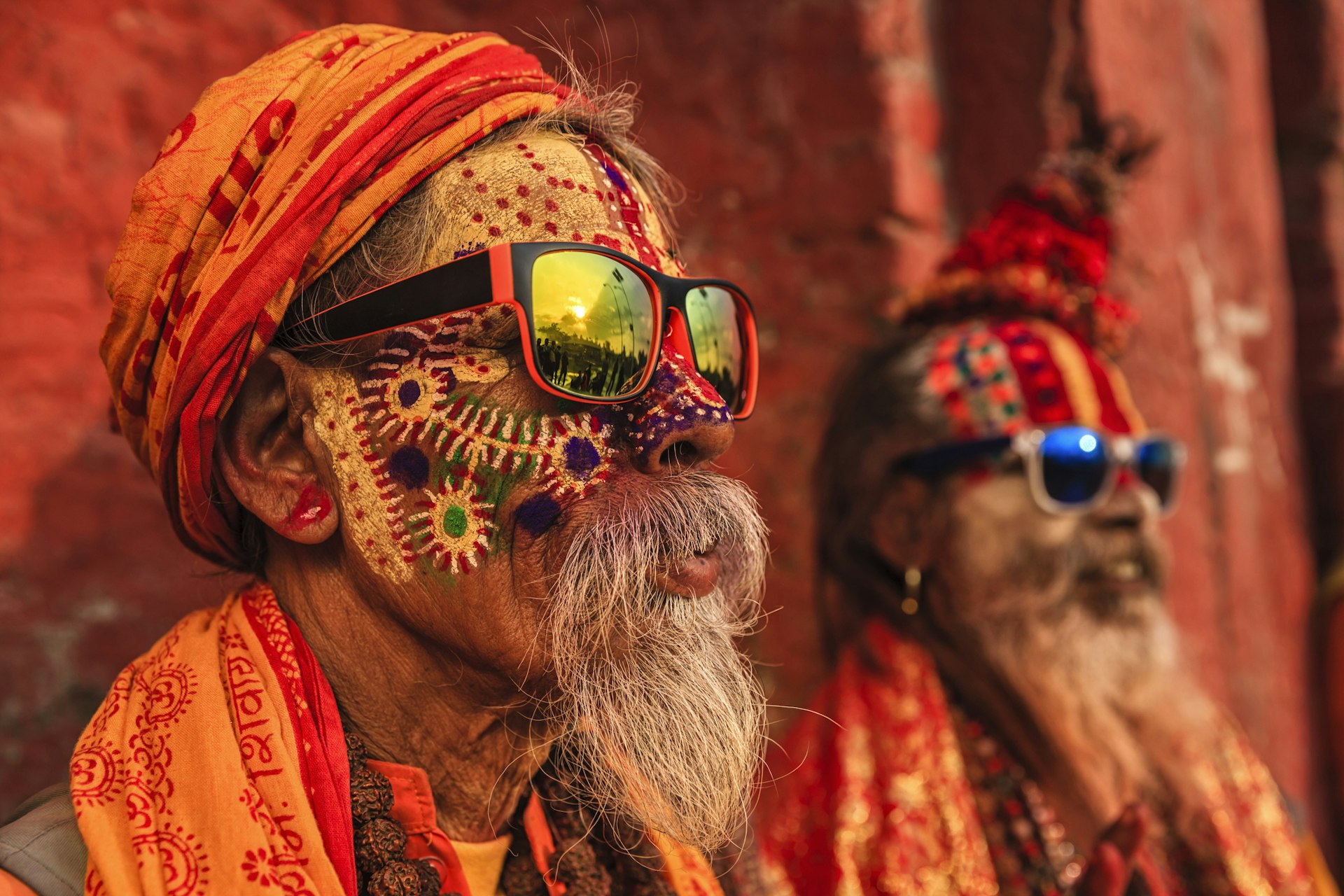
India is a place that overwhelms your senses in the best possible way – nowhere else delivers quite the same barrage of sights, sounds, sensations – and yes, even smells – as this continent-sized country at the heart of Asia.
It would take a lifetime to see all of India, let alone understand every nuance and facet of this nation of 1.4 billion inhabitants and 33 million gods. But with a little preparation, you can learn to navigate this nation of mountains and metropolises, tigers and temples, sublime experiences and scams.
We’ve collated the top things you need to know about visiting India, but the journey begins before you leave home. Apply for your Indian visa online for a smooth arrival on the subcontinent. Read on for 22 more insider tips that will help make your vacation unforgettable.
Get more travel inspiration, tips and exclusive offers sent straight to your inbox with our weekly newsletter.
1. Get your jabs before you travel
India is affected by a host of tropical illnesses, from malaria and dengue fever to rabies, so remember to get your jabs before you leave home. Contact a health professional at least eight weeks before you travel to ensure your jabs are up to date. Vaccination for diphtheria and tetanus, hepatitis A and B, polio and typhoid is usually recommended, on top of childhood vaccination for measles, mumps, rubella and varicella, plus the Covid-19 vaccine, of course.
Vaccinations worth considering for longer trips include Japanese B encephalitis, meningitis and rabies. Monkeys, dogs and cats can all carry the rabies parasite, and infection is fatal if untreated. Yellow fever vaccination is only needed if you are arriving in India from a country where the disease is endemic.
2. Take malaria precautions
Malaria is one of the nasties to take seriously in India. Take a suitable course of anti-malarial prophylaxis and follow the guidelines for the course – you usually start before you leave and continue after you get back. Always take precautions to avoid mosquito bites – this will also help you avoid dengue fever. Sleep under a mosquito net, wear long sleeves and trousers in light colors, and use a repellent and/or a plug-in mosquito killer with a high concentration of DEET (diethyltoluamide).
 Stay healthy in India by getting vaccinated and avoiding mosquitoes © Dmitry Rukhlenko / Shutterstock
Stay healthy in India by getting vaccinated and avoiding mosquitoes © Dmitry Rukhlenko / Shutterstock
3. Get insured
Travel insurance is essential for India. Public hospitals are poor, and private clinics and hospitals require payment ahead of treatment. Make sure you are covered for emergency evacuation and also for any adventure activities you plan to get involved in.
If you’re unlucky enough to be a victim of crime, contact the local police station or dial 100 or 112, the national emergency number. Treat your dealings with the police as a way to get a police report for your insurers rather than an attempt to catch the culprits.
4. Plan your trip around the seasons
India broadly has two seasons – rainy and dry – but it’s more complicated than that. The southwest monsoon brings rainy weather to most of the country from June to September, but this is the best time of year to visit the high-altitude deserts of Ladakh. There’s also a milder rainy season in the far south from October to December.
The ideal weather window for travel is from October to May, though temperatures and humidity climb to agonizing levels from March onwards in the run-up to the monsoon. If you find yourself in India in the spring, retreat to the Himalayan foothills for milder temperatures and good trekking conditions.
5. Book ahead for busy times and festivals
India can get very busy from November to February, and cheap accommodation can be swamped in peak season. It’s a good idea to book ahead, either directly with the venues or via booking aggregator sites.
Also, book train tickets ahead where possible, particularly for popular routes. Tickets can be booked (with a fair amount of hassle) via the government booking site IRCTC or more easily through local booking sites such as 12Go or Cleartrip.
6. Plan your comms before you travel
Many things in India (including train bookings) get easier if you have a local SIM card. Bring an unlocked phone from home (or pick one up locally) and get a phone shop to sign you up for a local pay-as-you-go SIM package on arrival. You’ll need to bring passport photos and photocopies of your passport ID pages to complete the application.
India’s colourful Holi festival
7. Check your lunar calendars
While India officially follows the Gregorian calendar, the major festivals for Hinduism, Buddhism, Jainism, Islam and several other religions follow lunar calendars and fall on different dates from year to year. Always check festival dates before you book your trip; the Indian government maintains a useful online list of public holidays.
8. Learn how to greet people
Being a tourist in India is a bit like being a celebrity. People will want to talk to you and often be photographed with you wherever you go. The standard greeting is to say “namaste” (greetings to you) with your hands together in a prayer-like gesture in front of your chest. When meeting Muslims, say “salaam alaikum” (peace be with you) – the correct response is “alaikum salaam.”
Shaking hands is a standard business greeting between men, but men and women rarely shake. Only ever use your right hand – the left hand is reserved for, shall we say, toilet business. The same rule applies when passing things to people.
If you get invited to someone’s home, bring a small gift (flowers or sweets are better than alcohol) and remove your shoes before entering. It’s polite to eat and drink what you are offered, even if you don’t really fancy it.
9. Dress modestly
It might seem old-fashioned (or even misogynistic), but modesty is taken seriously in India, especially for women. Every gender will have an easier time if they wear loose-fitting clothing that covers the legs and arms. Swimwear is only appropriate for the beach – many locals swim fully clothed. To fit in with the locals, consider investing in a kurta punjabi (long shirt and loose trousers for men) or a salwar kameez (a long shirt, loose trousers and scarf for women).
10. What to eat and how to eat it
Many religions in India have their own dietary rules. Muslims avoid pork, Hindus avoid beef, and some Hindus and Buddhists are vegetarian or vegan. Jains are vegans who avoid some vegetables (most notably onions, garlic and potatoes) and try to avoid causing harm to all living creatures. On the plus side, these rules mean vegan and vegetarian food is very easy to find in India!
Eating with your hands is the norm in many restaurants, particularly in the south. Mix rice and curry into balls with your fingers and push it into your mouth with your thumb. Some thalis (plate meals consisting of multiple curries and toppings) are served not on a plate but on a washed banana leaf.
11. Haggling is not a game of life and death
Haggling for a fair price when buying things is a way of life in India, but it should never be an angry process. Losing your temper is extremely bad form – if you can’t agree on a price with the vendor that you are both happy with, politely decline and shop somewhere else.
The rules of the game are as follows. The vendor will quote you a price that is more than the item is worth, then you’ll come back with a counter-offer. Try halving the quoted price and working up from there until you reach a mutually agreeable figure.
The “walking away” trick may bring a few last-minute adjustments, but before long, you’ll reach a threshold that the vendor won’t go below. Throwing in extra items may bring a discount on the overall cost.
 Knowing the etiquette before visiting a temple is very important © hadynyah / Getty Images
Knowing the etiquette before visiting a temple is very important © hadynyah / Getty Images
12. Temple etiquette is a serious business in India
Religion is taken very seriously in India, so it pays to know the rules for visits to temples, mosques, monasteries and gurdwaras (Sikh shrines). Always check if you are allowed to enter – some temples and mosques are closed to people who don’t follow the faith. Mosques may also be closed to visitors during prayers or on Fridays.
Remove your shoes before entering any religious building, and be prepared to cover your head with a scarf or shawl if asked to do so. Always cover your legs and arms (a sarong can be handy as an emergency cover-all). Some temples also ban leather goods, and many temples and monasteries do not allow photography.
Avoid pointing the soles of your feet towards a person or deity – this is considered disrespectful. The same goes for touching any person or effigy on the head. It is conventional to walk around Buddhist and Hindu shrines in a clockwise direction, in a ceremonial circuit known as a parikrama.
Making an offering or leaving a donation is often expected – locals always offer something, but be wary of priests waving official-looking receipts listing huge previous donations. Giving something is appropriate, but don’t feel pressured into leaving large sums.
13. Giving alms is common but up to you
The giving of alms has a long history in India, and foreigners can expect to be approached regularly by people looking for money. Whether you give or not is a personal choice, but many Indians give on a daily basis, particularly when visiting temples and mosques.
Be aware that some requests for money will be scams, and you may be able to do more good giving to charity or aid organizations rather than handing out cash. Don’t hand out sweets and gifts to children – instead, donate something genuinely useful (for example, books or stationary) to local schools or women’s groups.
14. Public displays of affection are best avoided
India has complex social rules about respect for elders. Older people are often greeted with the honorific “auntie” or “uncle,” and the ending ji may also be added to someone’s name as a sign of respect.
India can be quite conservative when it comes to interaction between unmarried men and women. Many marriages are arranged by parents, and unchaperoned contact between unmarried men and women is not the norm. India is also conservative when it comes to same-sex relationships – whatever your sexuality, it’s best to avoid public displays of affection.
 Keep your bags protected from thieves including opportunistic monkeys © Mick Elmore / Lonely Planet
Keep your bags protected from thieves including opportunistic monkeys © Mick Elmore / Lonely Planet
15. Street harassment is unfortunately common
There’s no nice way of saying this – harassment of women is commonplace in India, from intrusive stares and persistent attempts to start a conversation to blatant sexual harassment. Wearing a wedding ring (even if not married) and using dark sunglasses and headphones can buy you some privacy on public transport. If you are being hassled, drawing loud attention to the intrusion may encourage others to come to your aid.
More serious assaults are also a risk. Groping is common in crowds (particularly during festivals), and it’s best to seek out public transport carriages reserved for women. Never get into a taxi or tuk-tuk containing anyone other than the driver, and avoid walking alone in quiet areas, particularly at night. Decline offers of food or drinks from strangers.
16. Keep track of security situations in India
India has seen many deadly attacks by separatist and Marxist groups and Kashmiri insurgents. Monitor the local news and be alert for suspicious behavior, particularly around major tourist sites. Always check the security situation before traveling to Srinagar and the Kashmir Valley in case of flare-ups of violent unrest. Strikes, demonstrations and protests are also best avoided, as violence is common. In the event of trouble, obey curfews and stay inside – your hotel is probably the safest place to be.
 Be aware of things you cannot take photos of without arousing suspicion © St+art India Foundation
Be aware of things you cannot take photos of without arousing suspicion © St+art India Foundation
17. Follow the local rules and regulations
India has some unusual laws and regulations, and it pays to stay on the right side of them. Photographing bridges, the military and border crossings is considered a serious security issue, so don’t do it. When flying internally in India, you may be asked to surrender batteries from devices in your cabin bags. Smoking is banned in public places, and some areas also have bans on the consumption of beef – killing or injuring a cow in a road accident, even accidentally, can lead to violent reprisals.
18. Take the altitude seriously when hiking
Acute Mountain Sickness (AMS) is a risk when traveling above 2500m (8200ft), which covers most of the Indian Himalayas. AMS can be fatal, so always ascend slowly and take rest days to allow your body to acclimate to significant elevation changes. If you begin to feel ill while hiking in the mountains, stop, and if your symptoms don’t improve, descend immediately.
19. Steer clear of drugs
India may have a reputation as a place to push boundaries, but its drug laws are strict. Some religious groups are permitted to consume marijuana for ceremonial purposes, but that doesn’t extend to tourists. Even possessing small amounts of drugs for personal use can lead to a prison sentence – considering the penalties, it’s not worth the risk.
20. Avoid the tap water
Drinking or brushing your teeth with Indian tap water is a fast track to stomach troubles – the most common illness people experience in India. Stick to purified or bottled water (or even better, purify your own to avoid contributing to India’s plastic waste mountain).
The water rule extends to ice (be wary of ice in drinks and ice cream) and to uncooked foods, particularly salads, which may have been washed with contaminated water. When eating fruit, stick to things you can peel or wash thoroughly yourself, and be cautious of freshly prepared juices. Hot drinks are generally fine, so drink your fill of chai (sweet Indian tea).
 Keep abreast of the news, especially in regions where natural disasters may strike © Solovyova / Getty Images
Keep abreast of the news, especially in regions where natural disasters may strike © Solovyova / Getty Images
21. Watch local news to keep track of natural disasters
India is unfortunately prone to natural disasters, from catastrophic floods and landslides during the monsoon to glacial lake bursts and earthquakes in the mountains. Be alert to signs of natural disasters and keep an eye on the local news so you know which areas to avoid. The Times of India is one useful resource. If you are caught up in a natural disaster, follow the advice of emergency workers and try to leave the area quickly.
22. Spot the scams, and there are plenty…
India is home to several scams designed to separate travelers from their money, and touts and confidence tricksters can be found wherever tourists gather. Get tourist information and make bookings at official offices, rather than “tourist offices” you have been led to by people offering unsolicited help.
If anyone takes you to a hotel, shop or other establishment, they are usually angling for a commission, which will be added to the price you pay. Be dubious of claims that the place you want to go is “closed” – always check yourself to be sure.
Be wary of deals that sound too good to be true – for example, the gem scam, where travelers are tricked into buying worthless gems to “sell at a profit back home.” Be cautious accepting food or drink from strangers on buses and trains; travelers have been drugged and robbed in the past.



